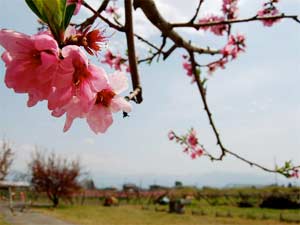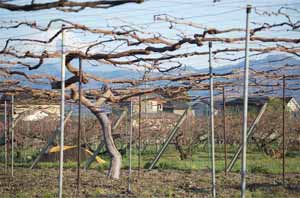My wife and I have traveled around the globe for the last 5 months and filmed our experiences within the WWOOF! organizations of France, Japan, Italy, and India, and are working on a feature film documenting this journey. “WWOOF! The Movie” is about a collective of organizations that go by the acronym WWOOF: World-Wide Opportunities on Organic Farms.
This clip is the first of a three-part segment about manual pollination in Japan. I’m editing this series specifically for web release, but it will also appear in “WWOOF! The Movie” in the full context of our 10-day stay with our host family at Nakagomi Orchards.
WWOOF Japan: Apple Blossoms from Ashley Terry.
As I’m sure many of you have heard, the global bee population is in decline. And while this is an alarming trend, it is not the reason that manual pollination of fruit trees occurs in Yamanashi. The history goes back to the 1940’s. My only source for this history is our host and friend, Kazumasa Nakagomi.
Though our crops will never survive without the wind, bees and other sources of natural pollination, this method of manual cross-pollination will likely yield more produce than relying on solely on Mother Nature.
Ashley Terry graduated from the University of Montana in 2004 with a degree in Broadcast Journalism and a minor in Media Arts. Since then, he has worked in broadcast news, commercial and television production houses, radio, and internet broadcasting. In 2007, he started “AT Films” as a professional wedding and event videography service provider and the business has since branched out into the world of documentary and short film production. He is currently working on a documentary called “WWOOF!” about the collective of organizations that make up the World-Wide Opportunities on Organic Farms coalition.


